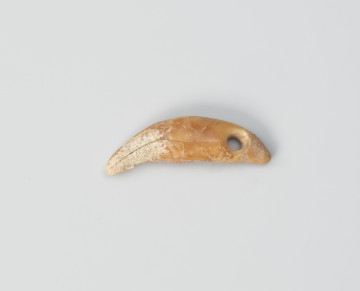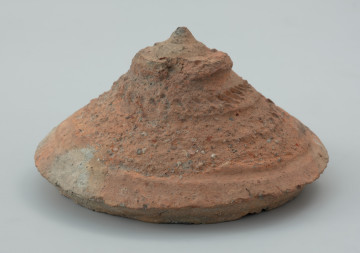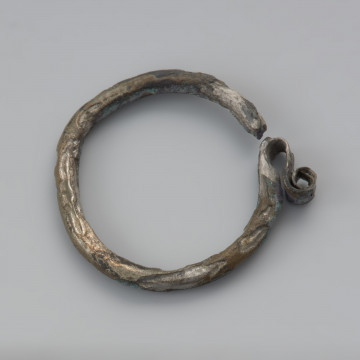
Animal tooth amulet
951 — 1050
National Museum in Szczecin
Part of the collection: Middle Ages
The clay vessel was discovered during excavations carried out at the end of the 19th century on an early-medieval burial ground in Wolin on the so-called Wzgórze Wisielców (Hangman’s Hill, or Galgenberg) in a barrow. It was one of the grave goods, perhaps previously used in a ritual performed during a burial ceremony. Burying the dead together with personal equipment such as weapons, tools, as well as head, neck and hand ornaments, was a common practice before Christianity. The type, quality and number of objects deposited in the grave together with the remains of the deceased testified to their wealth and social position. Some pagan customs survived long after the introduction of Christianity in Pomerania in the first half of the 12th century. The vessel discovered in the barrow is relatively small, barrel-shaped, with the edge of the rim turned to the inside. Its surface is rough and uneven. In the central part of the concave bottom there is an imprint of a potter’s mark that is barely legible today. These types of marks are interpreted in different ways – sometimes they are considered to be the signs of belonging to a particular pottery workshop.
Grzegorz Durdyń
Author / creator
Dimensions
cały obiekt: height: 6.2 cm, diameter: 8.8 cm
Object type
vessel (container), grave goods
Technique
roller technique, manual modelling, forming
Material
ceramic
Origin / acquisition method
field research
Creation time / dating
Creation / finding place
Owner
Muzeum Narodowe w Szczecinie
Identification number
Location / status

951 — 1050
National Museum in Szczecin

951 — 1200
National Museum in Szczecin

951 — 1100
National Museum in Szczecin
DISCOVER this TOPIC
National Museum in Lublin
DISCOVER this PATH
Educational path